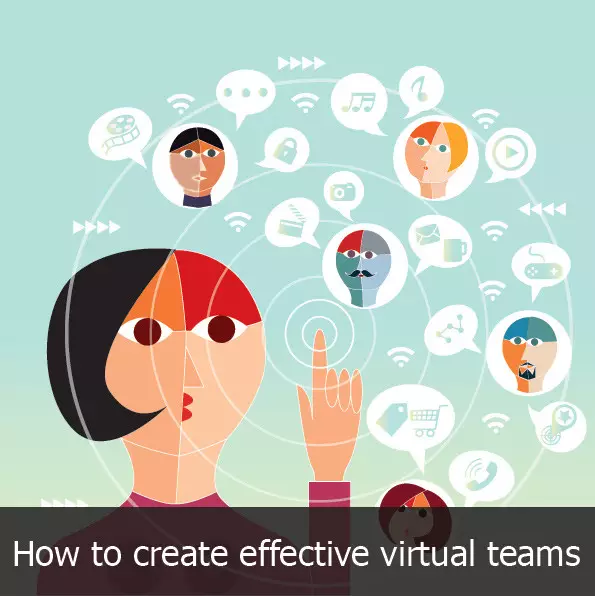How to Create Effective Virtual Teams

A 2012 survey conducted by the Society for Human Resource Management (SHRM) revealed that nearly half (46%) of all organizations make use of virtual teams (source). That percentage ratchets up among global companies (66%) and down among domestic-only companies (28%). The same survey shows that among organizations who make use of virtual teams, 51% note that the challenge of building relationships keeps the team from being more successful, which is about more than just dealing with time zone differences. Virtual teams are a fact of modern business life, but the web that connects their members is both intricate and fragile. Building effective virtual teams is no easy task.
 Defining Virtual Teams
Defining Virtual Teams
It is first useful to make sure we’re on the same page about what is meant by virtual team. In this article, it means the members primarily interact electronically in order to work on interdependent tasks, as opposed to groups of largely independent workers that don’t constitute a real team. In today’s increasingly global workplace, there’s a good chance that members of a virtual team will not share a time zone, country, native language, or even managers. These are now referred to as GMTs (global multicultural teams).
Face-to-Face Meetings
In an ideal world, even virtual teams would have a physical, face-to-face meeting early on in the team’s life. There’s so much essential team building that can happen very quickly when physically together, and much of it occurs in those casual face-to-face encounters in the break room, or around the coffee machine or water cooler. If it’s just not possible, then more effort has to be put into virtual team building. Annual or semi-annual face-to-face meetings should be seriously considered as one of the most effective ways to keep a virtual team’s members well connected.
Recognizing the Minefields
The virtual team landscape is laden with potholes that can throw things off, and most of it stems from not being together physically. It’s simply much harder to develop that needed sense of belonging, let alone high levels of trust needed for the team to reach peak performance levels. This uncertainty carries through into communications, where the electronic interfaces mask or eliminate nonverbal cues and behaviors. When team members span cultures and languages, the chances for misunderstandings and misinterpretations ratchets up considerably. Keeping in mind how likely such challenges are will prevent the team from feeling completely blindsided when they do occur, and remind everyone how important it is to get team formation basics right.
Team Charter
Some people tend to roll their eyes when someone brings up the idea of establishing a team charter. This is an absolutely crucial step that must not be overlooked by virtual teams. This is your best chance to lay some good ground rules and norms that will help the team avoid some of the most common potholes that can completely derail a virtual team. At a minimum, the team charter should include the following (source):
- Context (problem being addressed, why it’s important, expected outcomes).
- Mission and Objectives (a more precise spelling out of the team’s purpose and specific measurable milestones to get there).
- Composition and Roles (who is on the team and who will feel each needed role).
- Authority and Boundaries (this is important to spell out clearly so that team members don’t overstep what’s allowable or what needs approval).
- Resources and Support (does the team have what it needs to accomplish its mission?).
- Operations (details of how day-to-day stuff will get done).
- Negotiation and Agreement (all these elements require negotiation among team members and sometimes with other stakeholders. In the end, everyone needs to sign off on the final charter document).
Virtual teams would be wise to spend a good deal of time in the operations element of the charter talking about norms of communication, such as behavioral expectations around virtual meetings, what the team’s shared language will be, when to use email, and when to pick up the phone and talk, or when to create shared documents. Whatever different communication technologies are used, make sure they are all supremely reliable, which is more important than being on the cutting-edge of features.
Don’t Miss These Essential Tools
Download our The Strategic Value of Workplace Training and Development white paper
See 20 Ways to Improve Mandatory Training because the alternative is scary
Discover the Top 10 Ways Learning Management Systems Can Improve the Workplace Environment to enhance productivity
Explore the 10 Ideas To Optimize Online Training And Maximize Impact in your organization
Quickly see How to Jumpstart an E-Learning Program in Eight (8) Easy Steps